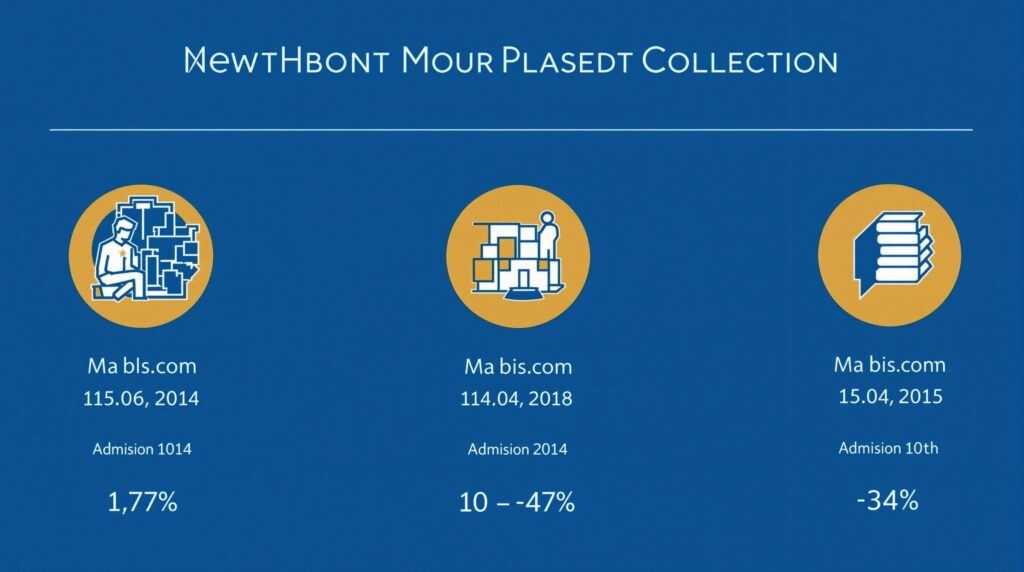Securing federal and state educational grants can transform your career trajectory by providing essential funding without the burden of repayment. Understanding how to get my federal government and state grant requires navigating specific application processes, meeting eligibility requirements, and submitting documentation on time—but the financial freedom it provides for your education makes the effort worthwhile.
Key Takeaways
- The Free Application for Federal Student Aid (FAFSA) is the primary gateway to both federal and state grant opportunities
- The maximum Pell Grant for 2025-26 is $7,395, providing substantial financial assistance for qualifying students
- State grants like California’s Cal Grant and New York’s Excelsior Scholarship offer additional funding opportunities with specific eligibility requirements
- Maintaining eligibility requires meeting Satisfactory Academic Progress standards, typically a 2.0 GPA minimum
- Always use official government websites when applying to avoid scams and fraudulent opportunities
Introduction to Federal and State Education Grants
Education grants represent a valuable funding opportunity for students seeking to advance their careers without accumulating debt. Unlike loans, grants don’t require repayment, making them an ideal solution for financing your education. In 2022, approximately 39% of college students received Pell Grants, with an average award of $4,511, demonstrating the widespread availability of this federal financial assistance.
The educational funding landscape includes both federal options like the Pell Grant, which offers a maximum award of $7,395 for the 2025-26 academic year, and state-specific programs that vary by location. Understanding how these grants work and meeting application deadlines are crucial steps in securing the financial support needed to achieve your career goals.

Understanding Eligibility Requirements
Federal grants like the Pell Grant primarily base eligibility on financial need determined through the FAFSA application. The 2023 FAFSA reforms introduced negative Student Aid Index (SAI) values as low as -$1,500, expanding access to those with exceptional financial need. Academic performance also plays a role, with most programs requiring students to maintain satisfactory progress after receiving funds.
State grants feature more varied eligibility criteria, often including state residency requirements and specific academic benchmarks. For example, California’s Cal Grant requires a minimum GPA and California residency, offering up to $13,752 for tuition through Cal Grant A or $1,648 for living expenses through Cal Grant B. When preparing to apply for grants, gathering the right documentation is essential for proving that you meet these requirements.
Step 1: Gather Your Documentation
Before applying for any educational grant, collecting all required documentation will streamline your application process. For the FAFSA, you’ll need Social Security cards, 2023 federal tax returns, W-2 forms, and records of any nontaxable income. The FUTURE Act has simplified this process by enabling direct data retrieval from the IRS, reducing manual entry errors.
State-specific grants may require additional documentation for verification purposes, such as proof of residency or academic transcripts. For example, New York’s Excelsior Scholarship requires verification of state residency and proof of full-time enrollment. Creating a digital folder to organize these documents can help ensure nothing gets overlooked when submitting your applications.
Step 2: Complete the FAFSA
The FAFSA is the foundation of all federal aid and many state grant programs. The application window for the 2025-26 academic year opened in October 2024, with a federal deadline of June 30, 2026. However, state deadlines are typically much earlier—California’s Cal Grant deadline is April 2, 2025, so marking these dates on your calendar is essential.
The recent shift from Expected Family Contribution (EFC) to Student Aid Index (SAI) has expanded grant accessibility by recognizing various financial circumstances more accurately. When completing your application on StudentAid.gov, take your time to ensure accuracy, as errors can delay processing or result in reduced funding. These FAFSA reforms have already shown impact, increasing Pell Grant recipients by 12.6% in 2024.
Step 3: Research and Apply for State-Specific Grants
Once your FAFSA is submitted, exploring state-specific grant programs can uncover additional funding opportunities. Award amounts vary significantly by state: Texas’ TEXAS Grant provides up to $5,000 annually for students enrolled at least half-time, while New York’s Excelsior Scholarship covers tuition gaps up to $5,500.
Each state has its own application procedures and deadlines. California uses the WebGrants portal for tracking Cal Grant status, requiring applicants to submit GPA verification forms by March 2, 2025, and maintain a minimum 2.0 GPA for renewal. Regional differences in award amounts are substantial—Arizona’s Pell Grant recipients averaged $4,779 in 2023 compared to $5,120 in Arkansas—making it worthwhile to understand what’s available in your state.
Step 4: Explore Additional Federal Grant Opportunities
Beyond the Pell Grant, several other federal grant programs target specific educational paths. The Federal Supplemental Educational Opportunity Grant (FSEOG) provides up to $4,400 for students with exceptional financial need, while the TEACH Grant offers $4,000 annually for future educators who commit to four years in high-need fields.
Pennsylvania’s FSEOG program awards up to $4,000 annually, prioritizing students with the greatest financial need. For students planning to take summer courses, Year-Round Pell Grants allow for 150% of the annual award, enabling accelerated degree completion. When considering the TEACH Grant, be cautious about the service requirements, as failure to fulfill them converts the grant to a loan that must be repaid.
Understanding the Disbursement Process and Maintaining Eligibility
Grant funds are typically disbursed directly to your educational institution first, covering tuition and fees before any remaining balance is refunded to you. For example, Florida’s Bright Futures Scholarship disburses $211.23 per credit hour for academic scholars. This process ensures that educational expenses are prioritized.
To maintain eligibility for renewal, you must meet Satisfactory Academic Progress (SAP) requirements, typically a 2.0 GPA and completion of at least 67% of attempted credits. Creating a calendar with renewal deadlines and GPA check points can help you stay on track. The 4.7% increase in undergraduate enrollment in 2024 correlates directly with expanded Pell access, demonstrating how these grants make education more accessible.
Avoiding Scams and Tracking Your Applications
Unfortunately, grant scams are common in the educational funding space. Legitimate grants never require application fees, and official information is always available through .gov websites. Be wary of any service claiming to guarantee grants for a fee or requiring payment information upfront.
For tracking your applications, use official portals like California’s WebGrants or your school’s financial aid dashboard. The Consumer Financial Protection Bureau offers a financial aid comparison tool to help evaluate different offers. If your application is denied, most institutions have an appeal process for extenuating circumstances, such as changes in financial situation or family emergencies. The U.S. Department of Education verifies about 30% of FAFSA applications annually, so accuracy in your submissions is crucial.
Writing Effective Grant Proposals for Specialized Funding
Some grants, particularly those for graduate students or specialized programs, require detailed grant proposals explaining your educational and career goals. Crafting a compelling narrative that connects your objectives to the grant’s purpose can significantly improve your chances of approval.
When writing these proposals, research the grant provider’s mission and priorities, then align your goals with their values. Include specific details about how the funding will help you achieve measurable outcomes, such as completing a degree program, conducting research, or entering a high-need career field. Many successful applicants work with their institution’s financial aid office or career center for guidance on proposal development.
Leveraging Grant Funding for Career Development
Educational grants can do more than just pay for tuition—they can become a strategic investment in your professional future. When planning how to use grant funds, consider how each educational expense contributes to your career objectives.
For students in fields requiring certifications or specialized equipment, some grants allow funds to be used for these career-essential expenses. Programs like the TEACH Grant directly connect funding to career outcomes by supporting future educators who commit to teaching in high-need areas. By navigating grants.gov workspace and other federal resources, you can find specialized funding aligned with your specific career path.
Sources
educationdata.org – Pell Grant Statistics
bestcolleges.com – Who Receives Pell Grants Statistics
urban.org – How New Federal Financial Aid Formula Affected Pell Grants
bestcolleges.com – How Much in Pell Grants Can You Get
financialaidtoolkit.ed.gov – Learn About the FAFSA
csac.ca.gov – What Are Cal Grant Award Amounts



